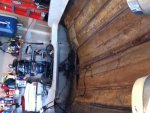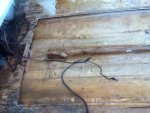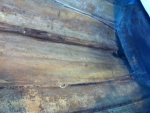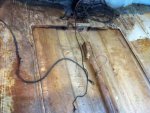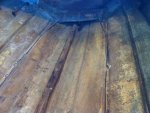I'm kind of familiar with the type of boat you are working with, there were 2 local builders that were building that class of boat. One was Switzer and the other was Hustler. Lots of go fast hulls. They also did not leave a lot of room for flotation foam but then back then that was the norm. I think you should try to get as much foam as you can inside that thing. Many things have changed since then including laws from the EPA and state DNRs as far as who and how much one is responsable if there is a sinking. Kind of a CYA approach in this case.
Agreed that when glass boats are built some concideration is taken as to the strength added by the decking and why it is joined to the hull. I also see a differance between glass boats and aluminum boats. On most glass boats the bottom, stringers, transom, decking are all sealed off. many have little or no bilge area for water to escape to so when it gets under the deck it gets trapped. Has no air movement under the deck and therefore has a hard time removing moisture and drying out. Also many times the pour in foam is completely filled in the whole space and has contact with the deck boards.
With aluminum boats the decking is not joined to the sides which as small as it is still provides a space for moisture to evaporate out. But at the same time because it is not sealed into the sides it provides an area for water to enter into the ends of the ply. Also with the Lunds and Alumacrafts that I have had experiance with the pour in foam does not fill the whole area under the deck and there is usually a large open bilge in the stern.
I also agree that conditions and use should factor into how a plywood deck should be treated. In my case the boat is not left outside uncovered exposed. It is also not left to sit full of water, leaves, wet towles or tarps.
For example, a number of years ago I bought a Lund S14 that has a factory installed flat deck. When I bought it it had been left outside uncovered, exposed. It even had small trees growing inside it. There was also a spot about 15" around that was soft but not a break thru.. 2 years past before I got around to repairing it and after storing it the way it should be when I pulled up the plywood it was all dry though deteriorated from previous exposure. So my experience with aluminum boats is even though they will get wet they also will dry out if treated properly.




















